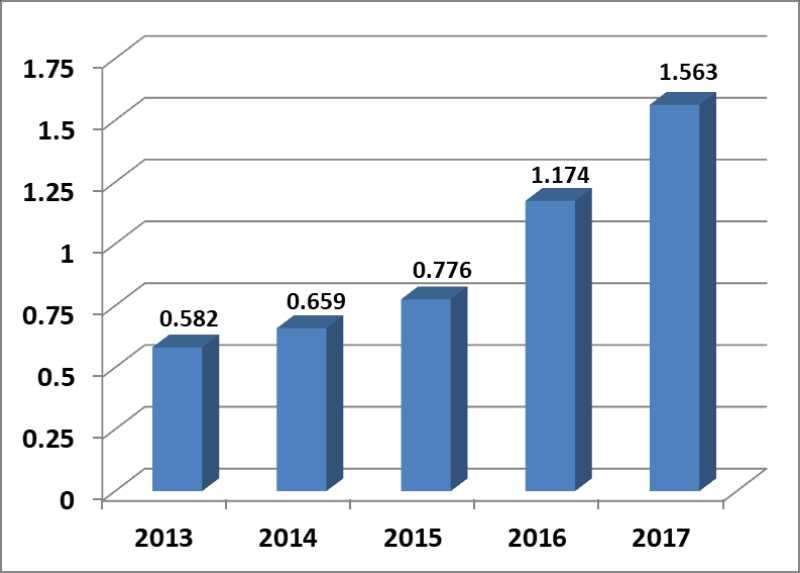CONTENTS
SPECIAL COLUMN ON THE NATIONAL SCIENCE FUNDS FOR CREATIVE RESEARCH GROUPS OF CHINA
The coupling between hydrodynamic and purification efficiencies of ecological porous spur-dike in field drainage ditch
Lei Rao(饶磊), Pei-fang Wang(王沛芳), Qing-song Dai(戴青松), Chao Wang(王超) (373)
SPECIAL COLUMN ON IWSH2017 (GUEST EDITTOR JIAHN-HORNG CHEN)
Simulation of violent free surface flow by AMR method
Changhong Hu, Cheng Liu (384)
Experimental research on kinematics of breaking waves
De Wang Chia, Longbin Tao, Xin Wang, Yali Zhang, Arun Kr Dev (390)
A computational study on system dynamics of an ocean current turbine
Jo-Ti Wu(吴若禔), Jiahn-Horng Chen(陈建宏), Ching-Yeh Hsin(辛敬业), Forng-Chen Chiu(邱逢琛) (395)
Fundamental problems in hydrodynamics of ellipsoidal forms
Touvia Miloh, Ioannis K. Chatjigeorgiou (403)
Case study on wavecurrent interaction and its effects on ship navigation
Chen Chen (411)
ARTICLES
Numerical simulation of cementing displacement interface stability of extended reach wells
Jin-tang Wang(王金堂), Bao-jiang Sun(孙宝江), Hao Li(李昊), Zhi-yuan Wang(王志远), Yong-hai Gao(高永海) (420)
Numerical simulation of dynamic characteristics of a water surface vehicle with a blended-wing-body shape
Xiao-cui Wu(吴小翠), Yi-wei Wang(王一伟), Chen-guang Huang(黄晨光), Zhi-qiang Hu(胡志强), Rui-wen Yi(衣瑞文) (433)
Fully integrated modeling of surface water and groundwater in coastal areas
Sha Lou(娄厦), Shu-guang Liu(刘曙光), Gangfeng Ma, Gui-hui Zhong(钟桂辉), Bo Li(李博) (441)
Waves propagating over a two-layer porous barrier on a seabed
Qiang Lin(林强), Qing-rui Meng(孟庆瑞), Dong-qiang Lu(卢东强) (453)
Analysis of the vortices in the inner flow of reversible pump turbine with the new omega vortex identification method
Yu-ning Zhang(张宇宁), Kai-hua Liu(刘凯华), Jin-wei Li(李金伟), Hai-zhen Xian(冼海珍), Xiao-ze Du(杜小泽) (463)
Flow structure at the downstream of a one-line riparian emergent tree along the floodplain edge in a compound open-channel flow
Ayse Yuksel Ozan (470)
Interaction between surface gravity wave and submerged horizontal flexible structures
Sarat Chandra Mohapatra, Trilochan Sahoo, C. Guedes Soares (481)
Effect of blade shape on hydraulic performance and vortex structure of vortex pumps
Ya-ping Ju(琚亚平), Si Liu(刘思), Chu-hua Zhang(张楚华) (499)
Transport feasibility of proppant by supercritical carbon dioxide fracturing in reservoir fractures
Xian-zhi Song(宋先知), Gen-sheng Li(李根生), Bin Guo(郭斌), Hai-zhu Wang(王海柱), Xiao-jiang Li(李小江) , Ze-hao Lü(吕泽昊) (507)
Pressure characteristics of hydrodynamic cavitation reactor due to the combination of Venturi tubes with multi-orifice plates
Kai Zhang (张凯), Zhi-yong Dong (董志勇), Rui-hao Yao (姚锐豪) (514)
The influence of perforated plates on wave transmission and hydrodynamic performance of pontoon floating breakwater
Chun-yan Ji(嵇春艳), Xiang Chen(陈翔), Xiao-jian Ma(马小剑), Zhiming Yuan (522)
LETTERS
URANS simulations of the tip-leakage cavitating flow with verification and validation procedures
Huai-yu Cheng(程怀玉), Xin-ping Long(龙新平), Yun-zhi Liang(梁蕴致), Yun Long(龙云), Bin Ji(季斌) (531)
Numerical simulation of wave-current interaction using the SPH method
Ming He (贺铭), Xi-feng Gao (高喜峰), Wan-hai Xu (徐万海) (535)
INTERNATIONAL ACADEMIC EXCHANGE
2nd International Conference on the Material Point Method for Modelling Soil-Water-Structure Interaction
(539)


